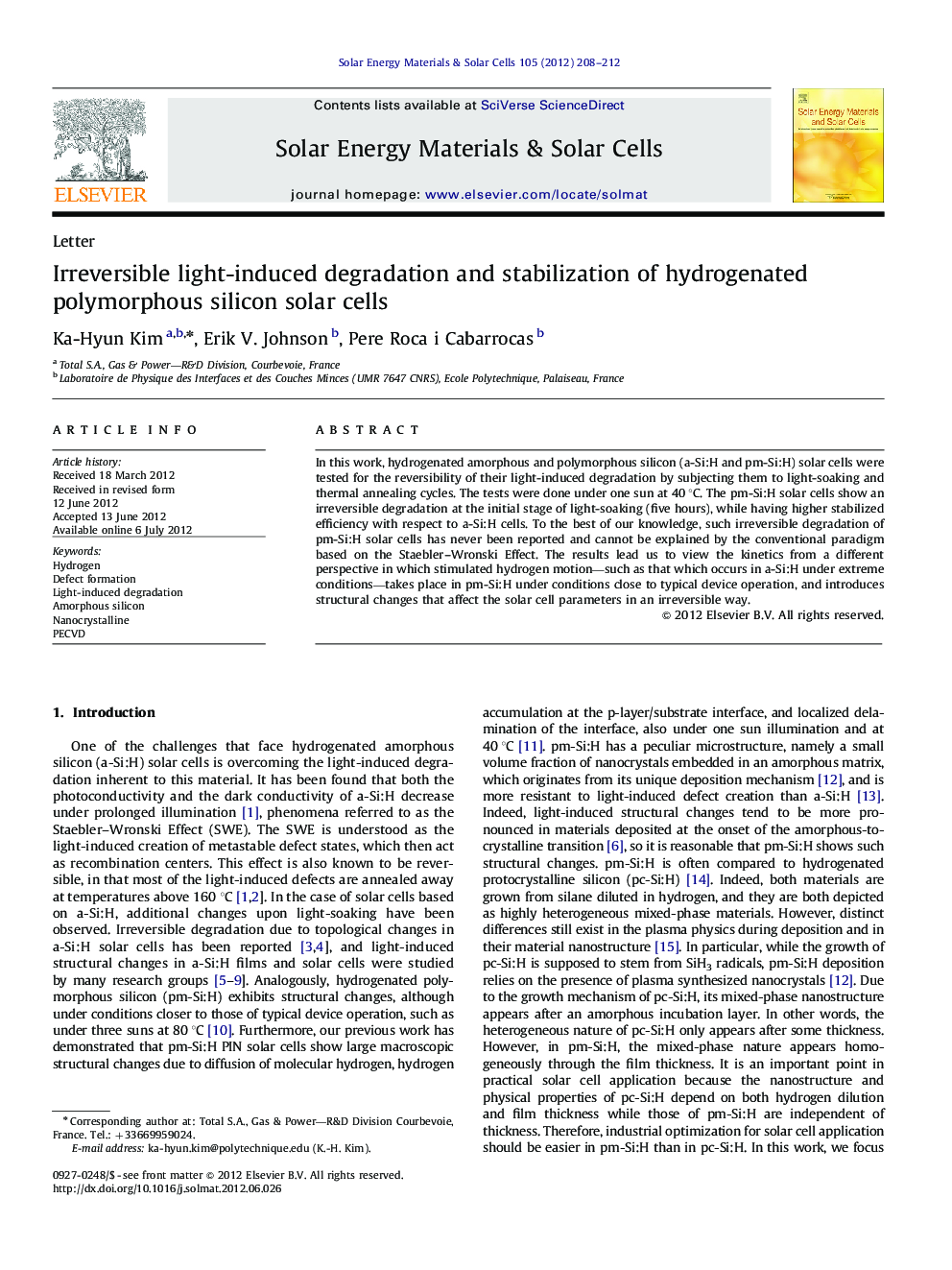| کد مقاله | کد نشریه | سال انتشار | مقاله انگلیسی | نسخه تمام متن |
|---|---|---|---|---|
| 78971 | 49345 | 2012 | 5 صفحه PDF | دانلود رایگان |

In this work, hydrogenated amorphous and polymorphous silicon (a-Si:H and pm-Si:H) solar cells were tested for the reversibility of their light-induced degradation by subjecting them to light-soaking and thermal annealing cycles. The tests were done under one sun at 40 °C. The pm-Si:H solar cells show an irreversible degradation at the initial stage of light-soaking (five hours), while having higher stabilized efficiency with respect to a-Si:H cells. To the best of our knowledge, such irreversible degradation of pm-Si:H solar cells has never been reported and cannot be explained by the conventional paradigm based on the Staebler–Wronski Effect. The results lead us to view the kinetics from a different perspective in which stimulated hydrogen motion—such as that which occurs in a-Si:H under extreme conditions—takes place in pm-Si:H under conditions close to typical device operation, and introduces structural changes that affect the solar cell parameters in an irreversible way.
Evolution of a-Si:H and pm-Si:H PIN solar cell conversion efficiency during light-soaking was studied. Every ten hours light-soaking was interrupted and the solar cells were annealed at 160 °C for two hours. Reversibility of the light-soaking effect was only presented in a-Si:H cells.Figure optionsDownload as PowerPoint slide
Journal: Solar Energy Materials and Solar Cells - Volume 105, October 2012, Pages 208–212